Paris-Roubaix: a rough ride
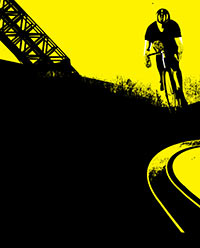
Simply sign up to the Life & Arts myFT Digest -- delivered directly to your inbox.
Cyclists are obsessed with suffering. Where other sports celebrate speed or strength, fluidity of movement or delicacy of touch, cycling fetishises a simpler, more brutal attribute. “What makes one cyclist better than the other is simply the ability to suffer more,” says David Millar, a five-time Tour de France stage winner.
Grit, determination and a stoic acceptance of physical pain are the sport’s bleak central pillars. So while the Tour de France, played out against the country’s most beautiful scenery under deep blue July skies, is the sport’s biggest event, many cycling purists prefer something rather more dour, a race with more mud, more crashes, more broken bones, and more miles to cover than any stage of the Tour. That race, in April each year, is called Paris-Roubaix, otherwise known as “the hell of the north”.
It was first run in 1896, seven years before the inaugural Tour de France, as a nonstop, 280km dash north from the capital to the industrial town of Roubaix in Flanders. The sobriquet did not come until 1919, when a group of organisers and journalists set out to see what was left of the course after five years of war. The further they got from Paris, the grimmer their discoveries, until they found themselves in a treeless waste, surrounded by bomb craters and the stench of broken sewers and rotting animal carcases. “The only things that stand out in this churned earth are the crosses with their ribbons in blue, white and red. It is hell,” reported L’Auto. But the race went ahead anyway.
Today, the hell is not so much the surroundings as the road surface. The course may have shrunk to 254km over the years, but 52km of those are over narrow, cobbled farm-tracks, some of them dating back to Napoleonic times. The rough cobbles – or pavé – are slippery, dangerous and exhausting to ride over. They cause punctures, broken wheels, cracked frames and have a tendency to rip into the flesh of riders who fall. In wet conditions, riders finish caked in mud; in dry, they choke on the dust.
For the hardcore cyclist, it could scarcely get any better. But then, three years ago, the organisers announced the introduction of an amateur event on the same vicious cobbles the day before the professional race. Now the carnival of suffering is open to all.
“When you hit the cobbles for the first time, you’ll think ‘this is actually not too bad’,” says Ian Holt, a former professional racer, the night before the race. “But then, after about 200m, it will feel like your eyes are suddenly popping out on springs like those joke-shop glasses. You can’t focus and your pupils just seem to go off in all directions.”
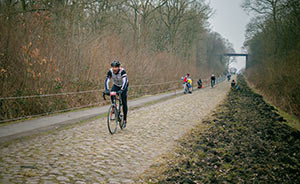
Holt runs La Fuga, a specialist cycling tour company set up to cater for the boom in the number of enthusiasts who want to take on Paris-Roubaix and other challenges like it. There are 16 of us on this trip – some have come by Eurostar from London just for the weekend; others from Norway, California, even Australia, and are making a full week of it. In the bar of the Hotel Saint Claude in Péronne, La Fuga’s base for the event, there is nervous discussion of tyre pressures (too hard and your fillings will fall out, too soft and you risk punctures) and how many spare inner-tubes to carry (the most experienced of the group recommends five). People are holding beers, but not really drinking.
Over dinner, I sit next to one of Holt’s staff, a newly-retired French pro, who cheerfully explains that in three attempts, he has only reached the end of the race once. The other two ended in him donating his wheel to his team leader (whose own had broken) and in a crash (“Bof – not serious – just some broken ribs, some contusion, some trauma”).
Breakfast is at 4.30am, which would have been a rude awakening had I managed to sleep. We drive in darkness to the start, in Busigny (the amateur event is shorter than the professional race, at 170km, but includes all 52km of cobbles). The town is asleep, shutters down, but its streets are filled with riders frantically faffing with clothing and equipment; 2,100 are taking part. Then at 7am, we are off, into the half-light.
First come 20km of phoney war, the pack of riders moving quickly through the early morning mist, in silence apart from the gentle whirr of chains and occasional click of changing gears. Then there is a sharp left turn between two fields, we cross on to the cobbles and instantly chaos reigns.
The bikes seem to come to life, animated by the intense vibrations. My handlebars jolt like a pneumatic drill; my front wheel leaps, skids and bounces. Waterbottles jump from their cages and lie strewn across the road. Tyres pop – already the muddy verges are dotted with riders wrestling with inner tubes in their freezing fingers.
The track crests a hill and begins to descend. I daren’t release my grip on the bars to reach for the brake, nor do those around me, so the blur of bouncing bikes picks up a sickening speed. It’s hard to know whether to concentrate on the cobbles ahead or the other riders swerving all around, inches from my elbows. The normal anxiety of a physical challenge – concern about tiredness, reaching the finish, niggling knee pains – is replaced by something more urgent, the fear of imminent injury.
Then suddenly we are back on tarmac, and it’s as if someone has flicked a switch and turned off the earthquake. The bikes become smooth, silent and docile once more. We can breathe again, process what has just happened, and what lies ahead. I realise that the most basic rule of cycling – save effort by riding in a tight group, “sucking” the wheel of the rider in front so you are pulled along in their slipstream – doesn’t apply here. Get close to others on the cobbles and they are likely to knock you off.
In all, there are 27 sections of pavé, varying in length from 300m to 3.7km, each destroying your rhythm and breaking up any groups that have formed on the preceding tarmac. Soon I am alone amid the vast open fields of Flanders, the absence of hedgerows leaving me buffeted by the cold wind. The last patches of winter snow lie in roadside hollows; the fields are ploughed bare earth, grey like the clouds above and the villages we ride through.
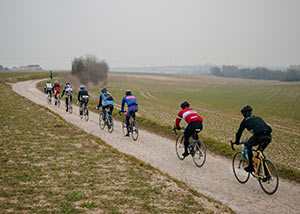
It may not be the true hell of 1919, but it remains a sombre landscape. We pass a power station, and the pithead machinery of abandoned coal mines. The roads are strewn with mud and manure. Twice I look down and see I’m riding over a dead rabbit.
We are a world away from the dramatic mountain-top finishes of the Tour de France, or the roaring crowds of the Olympic velodrome, but the austere plains of northern France and Belgium are cycling’s historic heartland, where the sport grew up and where the most committed fan base remains. It isn’t pretty but it feels somehow appropriate, the natural environment for a sport at the core of which, in the words of US cycling writer Scott Martin, “lies pain, hard and bitter as the pit inside a juicy peach”.
But if much of the route is bleak, one section is darker than all the others. Some 78km in, the road passes a mine, then descends toward the thick Arenberg forest, narrowing until it becomes a cobbled track, 2.4km long and arrow-straight. Here the cobbles are rougher than anywhere else and the tall trees seem to crowd in above the road. It would feel ominous even to those unaware of its nickname – la Tranchée, the Trench – or its savage history. Johan Museeuw, a three-time race winner remembered as the “lion of Flanders”, fell here in 1998 and shattered his knee, an injury which almost cost him his leg. In 2001, French rider Philippe Gaumont was leading the race when he crashed and snapped his femur. There have been many more.
Flying downhill towards the Trench, instinct screams at you to tense every muscle, grip the bars tighter than ever, and slam on the brakes. This is a mistake – the only way of getting through it is to loosen your hands, let the bike steer itself, and push down as hard as possible on the pedals to maintain momentum. Even doing all that, my bike jerks around so much that I let out a manic laugh.
…
Hours go by. The mind begins to wander. Some cyclists describe a disassociation of brain and body, others even talk about a sense of self-discovery found at the outer limits of exhaustion. The onset of extreme fatigue, wrote the French philosopher-cyclist Paul Fournel, brings about “metaphysical anxiety” followed by “furious descent deep into oneself”. Paris-Roubaix is not like that. Just as your thoughts begin to drift a little, you hit another section of cobbles and suddenly you are desperately fighting the bike, the road, the riders around you. Amid the brawl you think of self-preservation, not self-discovery. My hands go numb and I struggle to change gear; electric-shock pains jab at my neck.
Finally, after more than six hours in the saddle, I reach Roubaix, dart through the Saturday afternoon traffic and into the velodrome for a victory lap of the smooth cement track that has witnessed so much cycling history. Crossing the line, I feel empty more than jubilant, but there is beer and food in La Fuga’s marquee and soon I am toasting tales of adversity. Many of our group have had punctures, one suffered a broken wheel, one abandoned, one was temporarily hospitalised after crashing into a steel barrier at Arenberg. The finishers are beaming and swearing never to do it again.
But even the following day, as we watch the professional race, their resolve is softening. By the time the Swiss rider Fabian Cancellara triumphs – winning by less than a wheel length after five hours 45 minutes of racing, then collapsing to the ground – most of the group are back in love with what some call the “glorious suffering”. A week later, all but a couple are vowing to return.
Cancellara’s trophy is not a gold cup or cut-glass statue, but a cobblestone on a wooden plinth. After six hours in hell, cycling’s biggest stars shower in a communal block dating back to the 1930s. Later, visitors tour these “douches mythiques”. Green paint peels off the concrete walls, but there have been some improvements. “In 2008 they put in hot water,” says a wiry cyclist standing beside me. “This sport’s going soft.”
Tom Robbins is the FT’s travel editor.
Have you pulled off a personal challenge? Either comment below, email magazineletters@ft.com or join the conversation on Twitter using #FTPursuits. You can also tweet us your photos or upload them to Instagram (#FTPursuits)
——————————————-
What I learnt about myself
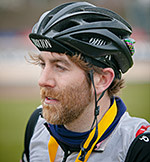
I am more competitive than I like to think. I enjoy the nervousness ahead of a challenge as much as the celebration afterwards. A scary upcoming challenge is by far the best motivation to get fit.
Tom’s tips
Don’t hold the bars too tight, the bike should “steer” itself. Go faster not slower on the cobbles – pushing hard with the legs eases pressure on the arms. Aim for the “crown” (the centre of the cobbled track); it is usually the smoothest part. Choose strong, rather than light wheels – aerodynamic carbon rims won’t survive. Make sure you have good insurance.
——————————————-
Tom Robbins was a guest of La Fuga (lafuga.cc) and Eurostar (eurostar.com ). La Fuga’s Paris-Roubaix Challenge weekend costs from £745, with transfers, meals and mechanics; bike hire adds £100. The Paris-Roubaix Challenge 2014 takes place on April 12. The official website is letour.fr/paris-roubaix. For advice on training and nutrition, and choosing the right bike for the event, see cyclingweekly.co.uk and road.cc.
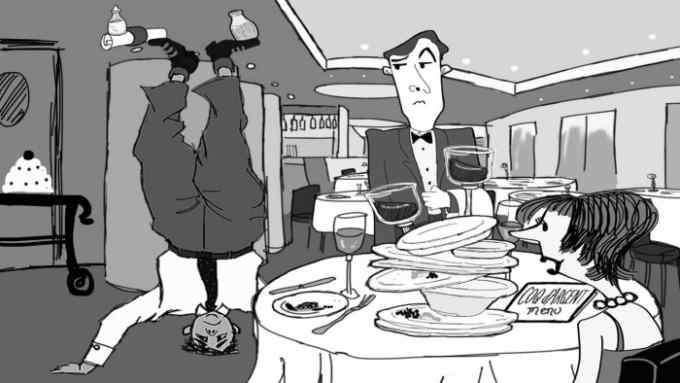
Comments